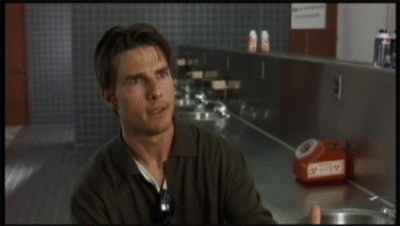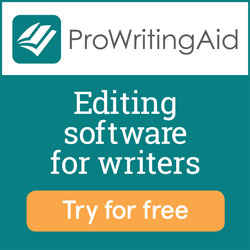
Shallee McArthur writes young adult science fiction and fantasy. Her YA sci fi novel, THE UNHAPPENING OF GENESIS LEE, debuts from Sky Pony Press Nov. 18, 2014. She is represented by Hannah Bowman of Liza Dawson Associates.
Connect with Shallee . . .
Website
Facebook
Twitter
Tumblr
Goodreads

QUERY
What are some important things for querying writers to consider when researching agents?
I think it’s important to remember that agents are more than numbers. How often they sell, how much they sell books for, how many big names they rep—all of these things are fairly easily learned. And they can definitely factor into your decision on who to query (or eventually, who to accept). But your relationship with an agent is not based solely on numbers. If they sell great, but your communication styles don’t mesh, or your vision for your career doesn’t fit with their strategies, they’re not the agent for you. An agent doesn’t have to be your best friend, but they should be someone you work well with!
Did you ever have a Revise & Resubmit? What should a writer consider when deciding whether or not to take one on?
I actually got an R&R after I got an offer of representation! I got an offer, emailed other agents who had the story, and got two more offers. Then I got an R&R from a lovely agent. She had certain ideas for story revisions, but she told me that if I already had an offer from an agent who was a fit for me, that I should go ahead with that. An R&R can be a wonderful opportunity—after all, it’s likely you’ll do revision with any agent, even if you sign. It can be a good way to see if you and an agent are an editorial fit. If the suggestions an agent gives on an R&R fit with your vision of your story, give it a shot! If it’s totally out in left field and it doesn’t fit your vision of the story, you’re never required to say yes!
Had you queried other books before the one that got you your agent?
Yup! I’d queried one previous novel. It got a few requests over about 8 months, but then just more rejections. I re-read it at one point and decided to stop and shelve it. I still loved it, but it was no longer my best work. In addition, I didn’t know exactly how to make it better. I was already working on my new book (which was GENESIS LEE), so I lovingly shelved the previous book in favor of the new one.
SIGN
What was the week surrounding your offer(s) of representation like for you?
It was crazy and exciting! I’d just started querying and had my first offer in barely over a week, so I was scrambling to email the other agents I’d queried (and even ones I hadn’t queried yet!) to see if they were still interested. I had two other offers that week, and two more phone calls with great agents. On one of the calls, I was out for lunch at the time. It was busy and loud in the restaurant, so I went outside to talk to her—and of course, there was loud construction going on! It was thrilling to have the offers, and also nerve-wracking. I’m glad it was only a week. J
How did you know your agent was the right one for you?
Funnily enough, I’d actually worked with my agent, Hannah Bowman, before she repped me. In fact, she wasn’t an agent at the time—she critted a previous book for me while she was interning at an agency. Her crit was spot on! When she became an agent, I knew I wanted to query her right off. And then she actually requested a full before I even started querying, after seeing me tweet a pitch for the book. I already knew our editorial styles meshed, and when we talked, I knew she really GOT me as a writer. She knew what I was trying to do with a story, and how to make it better. We also got along well, and she already had a good track record as a new agent, and she worked at an agency with a great reputation. With all that plus my gut feeling, I knew she was the best agent for me!
At what point do you share new story ideas with your agent?
It kind of depends on the book. Sometimes, I’ll ask her to brainstorm an idea in its early stages with me (she’s great at that). She’s asked for ideas of what I’m working on and to see early chapters, too—that’s been good to determine if a story is a good one to pursue. And of course, I send her a full draft when it’s ready. “Ready” means a different thing than before I had an agent—it’s not nearly as perfect as when I was querying, because my agent is now part of my editorial process to make the book as good as possible before submission to editors.
SUBMIT
What is a typical first round like once a writer goes on submission?
My agent sent out my book to several editors—she told me which ones, and sent me the cover letter/pitch she sent to them as well. When we got responses from editors, she would sometimes forward the responses on to me, but only if they had particular praise or good editorial feedback. Otherwise, she’d just let me know if they passed or wanted to take it to the editorial committee. From there, it was either a pass from the editorial committee, or it would go to the acquisitions committee. This process can take a looooong time. Waiting while on sub can be even worse than waiting while querying!
Is there anything you learned while being on submission that you didn’t know before?
That while on sub, you no longer get “rejections.” They’re referred to instead as “passes.” This can actually be psychologically beneficial—it’s better to hear that an editor passed, instead of rejected you! ;)
Did you know there was interest in the book before you got an offer or was it a surprise?
Hannah had emailed me to let me know an editor was interested and was taking it to the next step. This had happened a few times, but this one sounded a bit more promising, so I was feeling hopeful but trying not to be too hopeful.
And then my phone rang, and I saw my agent’s name on it, and I started freaking out before I even picked it up to hear we had an offer!
Thanks, Shallee!
See other Query. Sign. Submit. interviews
Read inspiring stories of writers getting agents
Learn about Tools for Writers- like Scrivener!

















 *Illustration by
*Illustration by 
 I love it when a great story idea grips me. Often, it starts with one small thing…a sound or a flash image. Sometimes I’ll get both, something utterly sensory that sends a thrill through me, like the ominous flutter of a plastic grocery bag caught in a tree branch on a windy day. Immediately I’ll start to “know” things. There’s water nearby. A dead body lays in the reeds, a teenage girl. A boy with find her, one who has lost the ability to speak. Snippets trickle in, clues of the story ahead, of what is to come. Excitement builds. I’m sure it’s a similar process for many of you.
I love it when a great story idea grips me. Often, it starts with one small thing…a sound or a flash image. Sometimes I’ll get both, something utterly sensory that sends a thrill through me, like the ominous flutter of a plastic grocery bag caught in a tree branch on a windy day. Immediately I’ll start to “know” things. There’s water nearby. A dead body lays in the reeds, a teenage girl. A boy with find her, one who has lost the ability to speak. Snippets trickle in, clues of the story ahead, of what is to come. Excitement builds. I’m sure it’s a similar process for many of you.












